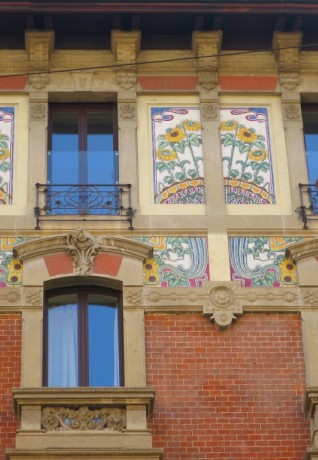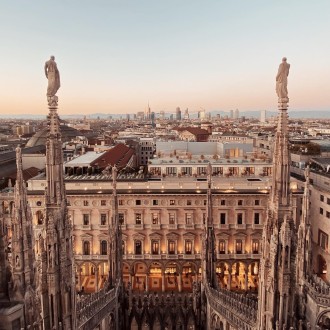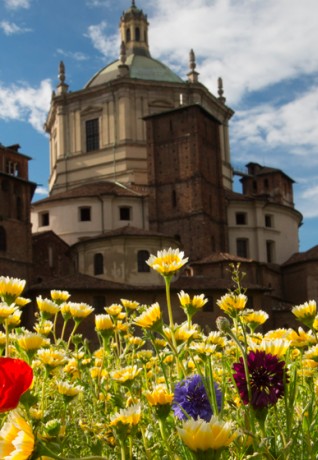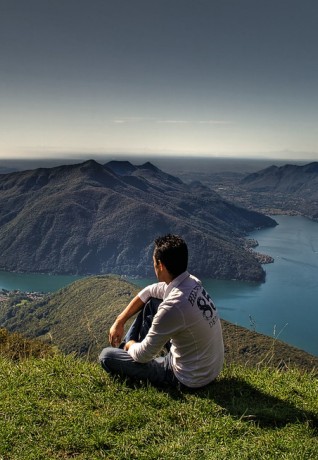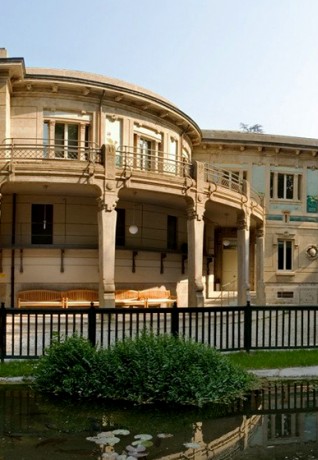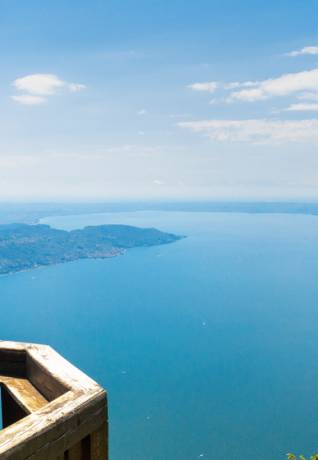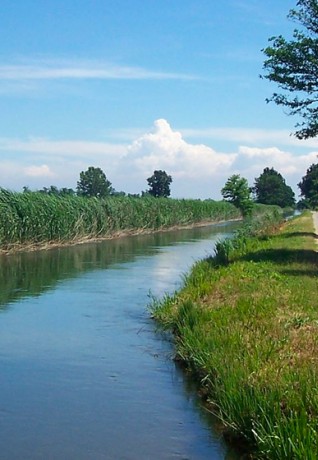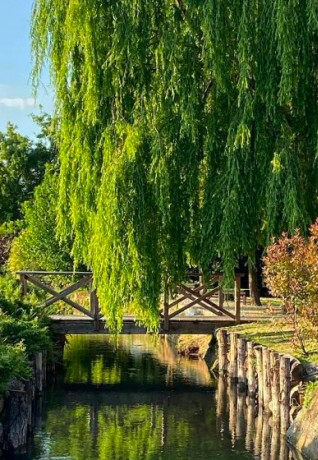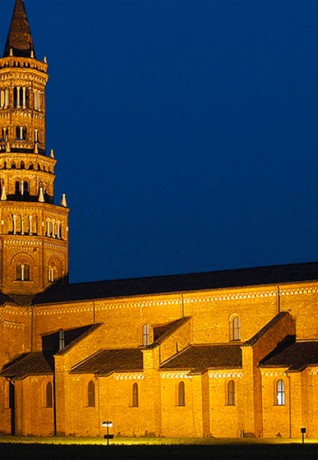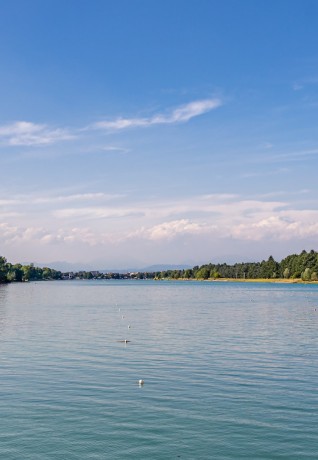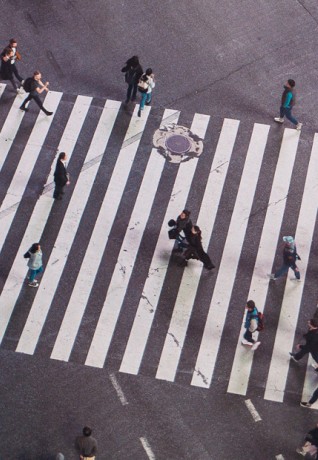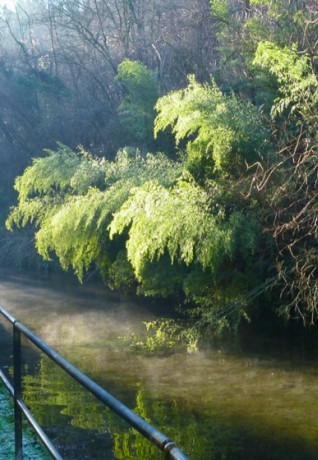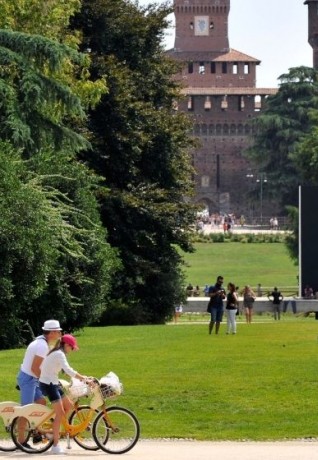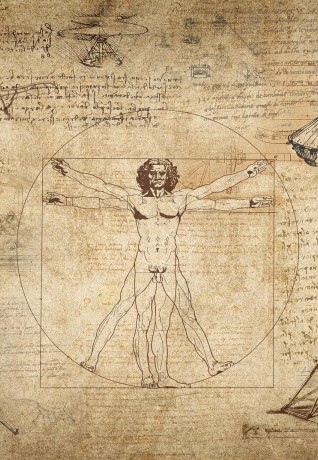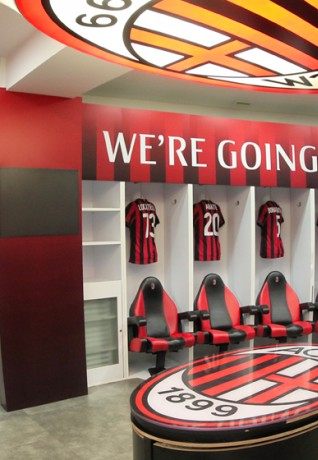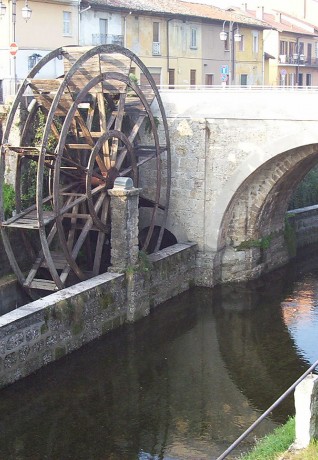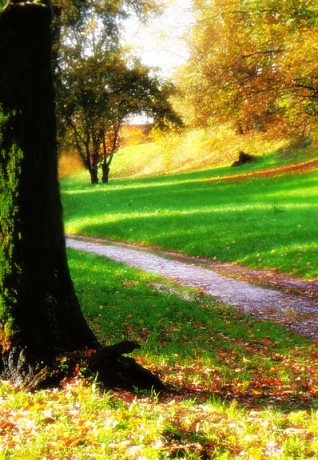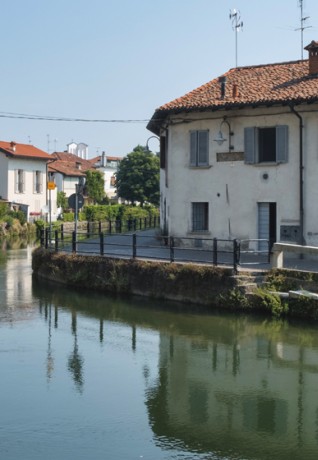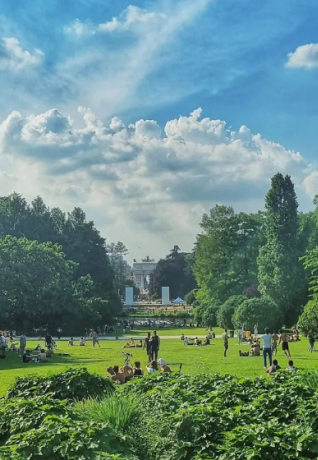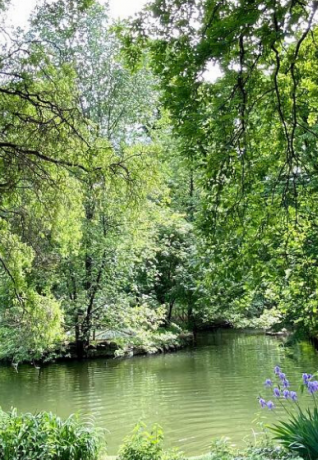LIBERTY IN MILAN - PORTA VENEZIA
Bicycle itinerary
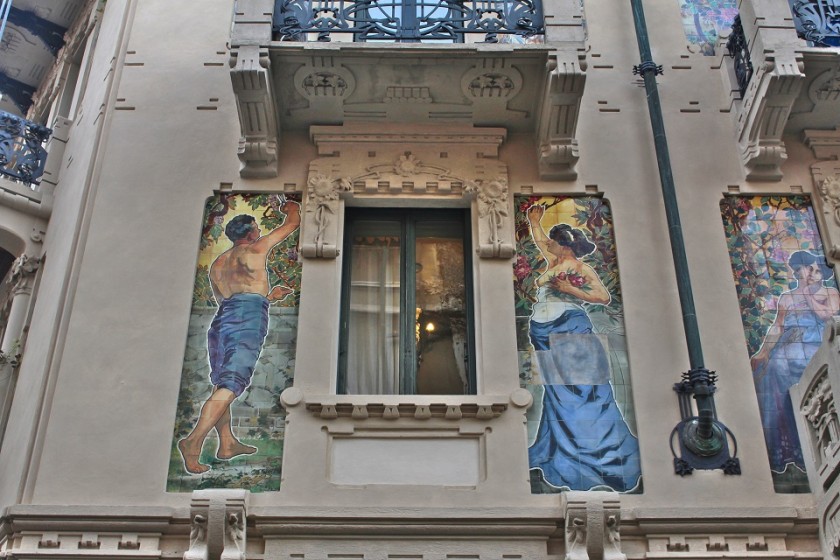
The Porta Venezia district is one of Milano’s most fascinating and an area where some of the city’s Art Nouveau highlights are on show. Let us start our ride and discover the first stop of our itinerary.
Our route starts from Milan’s imposing Stazione Centrale, designed by Ulisse Stacchini and embodying an intriguing mélange of Art Deco and classical features.
From piazza Duca d’Aosta, in front of the station, cycle along via Vittor Pisani to Viale Tunisia. Then turn left and carry on to Corso Buenos Aires and straight along Viale Regina Giovanna, into via Lazzaro Spallanzani to the right, then left into via Melzo. Get off your bike as you turn left into via Frisi for the itinerary’s first stop at n.2: the ex-Dumont Cinema, built between 1908 and1910 and in use until 1932. The buiding originally comprised a waiting room, a movie theatre and a café, with the projection booth housed on the first floor. Only the Art Nouveau façade with French floral influences remains from the original building today. The former cinema is now the seat of the local municipal library.
Continue your itinerary in via Malpighi where Casa Galimberti and Casa Guazzoni face each other at n 3 and 12 respectively, both designed by architect Giovan Battista Bossi.
Casa Galimberti displays painted ceramic tiles depicting gigantic polychromatic figures - mostly female - and lush foliage motifs that almost entirely cover the façades.
Casa Guazzoni, on the other hand, excels for its fluid embellishments in wrought iron and concrete. The arches on the ground floor are interspersed with imaginative female heads (all individually crafted) while the middle section of the first floor features an elegantly hued floral frieze.
From via Malpighi, turn left and then right into Viale Piave. Pause and admire the ex- Diana Kursaal at n. 42, now the Sheraton Diana Majestic Hotel. This historic hotel was designed by Achille Manfredini during the Belle Époque, and featured the Bagno di Diana, the first public swimming pool in Italy. Inaugurated on October 1st, 1908, the Kursaal was an entertainment and recreational venue for the elite. Its 125.000 sqm comprised a restaurant, a ballroom, a sphere court for pelota and an ample theatre for variety shows and operettas. Inside the building, near the outdoor area, the statue of the Goddess Diana, that once marked the entrance to the ancient swimming pool, still poses evocatively.
From Viale Piave turn left in Piazza Oberdan and Corso Venezia.
Palazzo Castiglioni, at 47/49, Corso Venezia, is a masterpiece created by architect Sommaruga and the first building designed in the new bourgeoisie style in one of the most ‘noble’ areas of Milan, a display of wealth and grandeur created almost as an act of defiance towards more conservative citizens. A bold challenge that the city was probably not ready to accept given that, when the scaffolding was removed from the façade in 1903, public opinion sided strongly against it. It requested the removal of two seductive female nude statues - representing Peace and Industry - that framed the entrance portal: they were replaced with more suitable floral decorations. Hence, the Milanese ironically nicknamed the building Ca de ciapp or House of Buttocks. Considered as the manifesto of Italian Art Nouveau, the building is now the seat of the Union of Commerce. Following the renovation carried out after its change of use, the edifice retains a splendid three-storey staircase and, on the main floor, the Sala dei Pavoni, the Peacock Hall, richly adorned with stuccos.
Continue along Corso Venezia towards San Babila and turn left into via Gabrio Serbelloni and then left again into via Cappuccini. The most famous Quadrilateral in Milan is the exclusive fashion district, but another one exists, much less hectic and lively, a dreamy tangle of streets poetically defined as the Silent Quadrilateral - which is definitely worth a stroll. Nestled between Corso Venezia and Corso Monforte, this central but calm oasis of nineteenth-century Milan is a short walk from San Babila. It could once count among its admirers men of letters such as Parini and Stendhal and among its residents painter Carlo Carrà and poet Filippo Marinetti. The Case Berri Meregalli, designed by Giulio Ulisse Arata, are located on the block formed by via Cappuccini, via Barozzi and via Mozart. The building at via Cappuccini 8 is a striking mélange of styles and it represents the latest example of Milanese Art Nouveau architecture. If, on the one hand, it incorporates the ashlar masonry typical of medieval architecture and Roman art with squat and lowered dimensions, the building also has elements emblematic of Milan’s Art Nouveau showcased in the floral and plant motifs on the façade, together with the sculpted details. The uppermost section of the building is richly ornamented with large carved cherubs clinging to downspouts and many decorative animal themes (rams, fish, frogs, owls, dogs and lions) prevail over floral ones. However, it also demonstrates the love for Byzantine-type golden mosaics that seem to clash with the red bricks. In the fascinating entrance hall, you can admire the mosaics and ceilings by Angiolo D'Andrea and Adamo Rimoldi along with the famous Victory sculpted by Adolfo Wildt (1919).
Via Mozart 21 is the first of the Berri Meregalli houses and features imposing frescoed female figures on the façade. The main balcony is decorated with mighty balustrades and rams’ heads, while the French window is adorned with a tympanum fragmented with a ram's head.
Also by Adolfo Wildt is a bronze sculpture in the shape of an ear, in Via Serbelloni 19, that served as the first-ever intercom system. Casa Sola Brusca was renamed by the Milanese as Ca’de l’Oreggia, or the Ear-house. The reason for the unique name can be found next to the entrance to this 1930s building where a bronze ear, created by the Italian sculptor, draftsman and medal-maker Adolfo Wildt kept those outside the building connected with the Concierge.
Continue along via Mozart and turn right into 4, via Vivaio, to Casa Tensi, which is a very elegant building evoking the sinuous shapes of the Parisian Art Nouveau. It was designed by architect Ernesto Pirovano, famous for the fluid floral decorations that made the balconies and façades of his projects unique.
Continue along Via Maggiolini and turn right into Viale Majno. Then carry on towards Viale Bianca Maria and turn right into Via Mascagni, then left in Via Donizetti and Via Bellini.
Casa Campanini, at n. 11, is one of the charming masterpieces of Milanese Art Nouveau: architect Alfredo Campanini built it for himself and his family and designed the sculptural figures of the portal, the stained-glass windows and the wrought iron twisted into plant motifs. He was evidently influenced by Sommaruga’s work because the building’s entrance is guarded by two solemn and absorbed maidens, a tribute to Palazzo Castiglioni. It is worth taking a look inside to admire the wrought iron gate and the embellishments on the glass. On the decorative balconies, created by Alessandro Mazzucotelli, applied arts play with structural architecture to make the entire building unique in its genre.

 Log in
Log in



